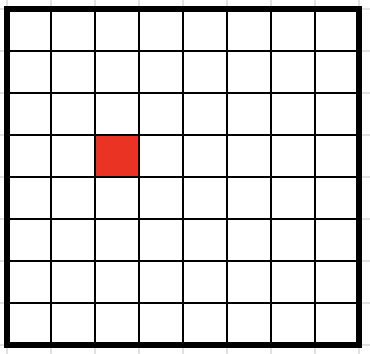Problems
On a \(100 \times 100\) board 100 rooks are placed that cannot capturing one another.
Prove that an equal number of rooks is placed in the upper right and lower left cells of \(50 \times 50\) squares.
A ream of squared paper is shaded in two colours. Prove that there are two horizontal and two vertical lines, the points of intersection of which are shaded in the same colour.
An endless board is painted in three colours (each cell is painted in one of the colours). Prove that there are four cells of the same colour, located at the vertices of the rectangle with sides parallel to the side of one cell.
A board of size \(2005\times2005\) is divided into square cells with a side length of 1 unit. Some board cells are numbered in some order by numbers 1, 2, ... so that from any non-numbered cell there is a numbered cell within a distance of less than 10. Prove that there can be found two cells with a distance between them of less than 150, which are numbered by numbers that differ by more than 23. (The distance between the cells is the distance between their centres.)
On the grid paper, Theresa drew a rectangle \(199 \times 991\) with all sides on the grid lines and vertices on intersection of grid lines. How many cells of the grid paper are crossed by a diagonal of this rectangle?
In the \(6\times7\) large rectangle shown below, how many rectangles are there in total formed by grid lines?

Imagine a \(5\times6\) rectangular chocolate bar, and you want to split it between you and your \(29\) closest friends, so that each person gets one square. You repeatedly snap the chocolate bar along the grid lines until the rectangle is in \(30\) individual squares. You can’t snap more than one rectangle at a time.



The diagram shows a couple of choices for your first two snaps. For
example, in the first picture, you snap along a vertical line, and then
snap the left rectangle along a horizontal line.
How many snaps do you need to get the \(30\) squares?
Prove that it’s impossible to cover a \(4\times9\) rectangle with \(9\) ‘T’ tetrominoes (one copy seen in red).


One square is coloured red at random on an \(8\times8\) grid. Show that no matter where this red square is, you can cover the remaining \(63\) squares with \(21\) ‘L’ triominoes, with no gaps or overlaps.

